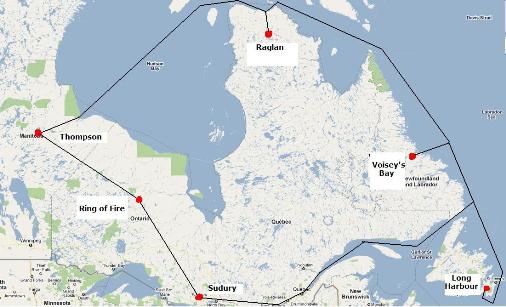Mining is the largest private sector employer of Aboriginals in Canada. Aboriginals
represent 7.5% of the mining workforce. Between 1996 and 2006, there was a 43%
increase in the number of Aboriginals employed in the mineral sector rising from
2,600 to more than 4,500. In the five years since 2006, this number has increased
significantly as more mining exploration and development takes place in areas
close to Aboriginal communities. (OMA)
Six First Nation members, who graduated recently from an underground miner training program, have found instant employment with Ontario Mining Association members Northgate Minerals and Dumas Contracting. A partnership between these companies and the Matachewan First Nation under the Matachewan Aboriginal Access to Mine Jobs Training Strategy (MAATS) created these employment opportunities.
The second group of graduates under this MAATS program included David Batisse, Dustin Roy, John Cloutier and Chad Larkman from the Matachewan First Nation, Katlin Maurer from Beaverhouse First Nation and Kohl Porter of the Mattagami First Nation. Three of the graduates have been hired by Northgate Minerals and three have been hired by Dumas Contracting.
























